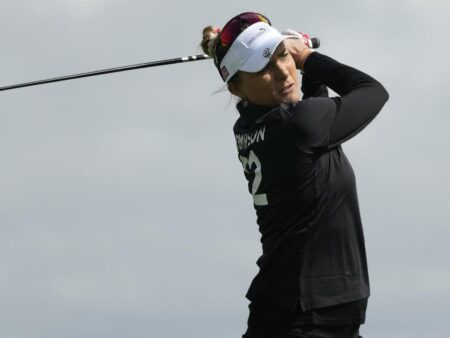In the high-stakes world of professional tennis, debates often swirl around rankings, rivalries, and grueling schedules. But a new, rather pointed discussion has emerged, focusing not on the players` skills, but on the very ground they compete on. World No. 3, Alexander Zverev, has recently voiced a significant grievance: the alleged homogenization of tennis court surfaces across the globe. His assertion, echoing earlier comments from none other than Roger Federer, suggests that this uniformity is a deliberate move by tournament directors to ensure consistent victories for the sport`s shining new stars, Jannik Sinner and Carlos Alcaraz.
Zverev`s Serve: A Cry Against Conformity
Speaking from the Shanghai Masters 1000, Zverev didn`t mince words. He expressed a strong dislike for the current state of affairs, where he feels court speeds are indistinguishable from one venue to another. His exact sentiment: “I hate when the speed of the court is the same everywhere. I know that tournament directors are moving in this direction because, obviously, they want Sinner and Alcaraz to win in every tournament.”
This “attack from the front,” as some might call it, isn`t just a casual observation. It implies a strategic manipulation of playing conditions to cultivate specific narratives and, presumably, maximize viewership by continually featuring the sport`s most marketable talents. For Zverev, a former World No. 2 whose 2025 season hasn`t exactly been a highlight reel, it raises an interesting question. Is this a genuine concern about the evolution of the sport, or, as the Italian press rather pointedly suggested, a classic case of the fox and the grapes – complaining about the fruit when one cannot reach it?
The Shifting Sands (and Grass, and Hard Courts) of Tennis
Zverev`s argument harkens back to a bygone era of tennis, where specialized skills for different surfaces were not just preferred, but often essential for success. Historically, playing on grass, clay, or hard court demanded distinct tactical approaches and physical attributes. A serve-and-volley specialist might dominate Wimbledon but struggle mightily on the slow red clay of Roland Garros. Today, however, players are expected to excel, or at least compete effectively, across all three major surfaces.
This shift isn`t entirely new. The debate about court speeds has simmered for years, with many observing a gradual slowing of hard courts and a speeding up of clay, alongside significant changes to Wimbledon`s hallowed grass courts since 2001 (switching to pure perennial ryegrass for increased durability and a higher bounce). The aim, ostensibly, has been to foster more baseline rallies, increase the average match length, and perhaps, create a more television-friendly spectacle. Yet, Zverev`s complaint highlights a growing concern that this “linear” approach might be eroding the unique character of each tournament.
Sinner`s Cool Response and the Broader Picture
When pressed on Zverev`s comments, Jannik Sinner offered a pragmatic, almost zen-like response. He calmly deflected any notion of personal involvement in court preparation:
“Carlos and I don`t make the courts. It`s not our decision. We try to adapt in every situation. I feel that anyway, every week the surface is a little different. I`ve also played excellent tennis when the courts were faster. But I don`t make the courts; I just try to play the best tennis possible.”
Sinner`s reply underscores the professional athlete`s primary directive: adapt and perform. It also subtly suggests that perhaps exceptional talent, rather than court manipulation, is the driving force behind current successes.
This discussion isn`t isolated. It joins a chorus of player concerns, most notably Novak Djokovic`s repeated criticisms of the ATP Tour`s “too packed” calendar. Djokovic, also from Shanghai, lamented that while many complain about the schedule, “nobody does anything when it`s needed.” This mirrors the perceived inertia around the surface debate, where problems are acknowledged but systemic change remains elusive.
Adapt or Complain: The Modern Tennis Dilemma
The “surfacegate” saga, if we can call it that, presents a fascinating glimpse into the internal tensions of professional tennis. Is the sport deliberately engineering conditions to promote its biggest draws? Or are the top players simply so comprehensively good that they transcend surface variations?
For Zverev, currently ranked outside the top two and struggling to replicate his earlier form, his timing inevitably invites skepticism. Had these comments come during his ascendance to World No. 2, they might have carried more weight. Now, they risk being dismissed as a rationalization for not reaching the same heights as Alcaraz and Sinner. Yet, the underlying point about maintaining variety in tennis courts is valid. The distinct challenges posed by different surfaces have historically been a cornerstone of the sport`s appeal, showcasing diverse skill sets and strategies.
As the ATP Tour continues its global circuit, the debate over court uniformity will likely persist. Whether it leads to actual changes or remains a recurring lament from those struggling to keep pace, one thing is clear: the future of tennis surfaces, and the playstyles they foster, is far from settled.











